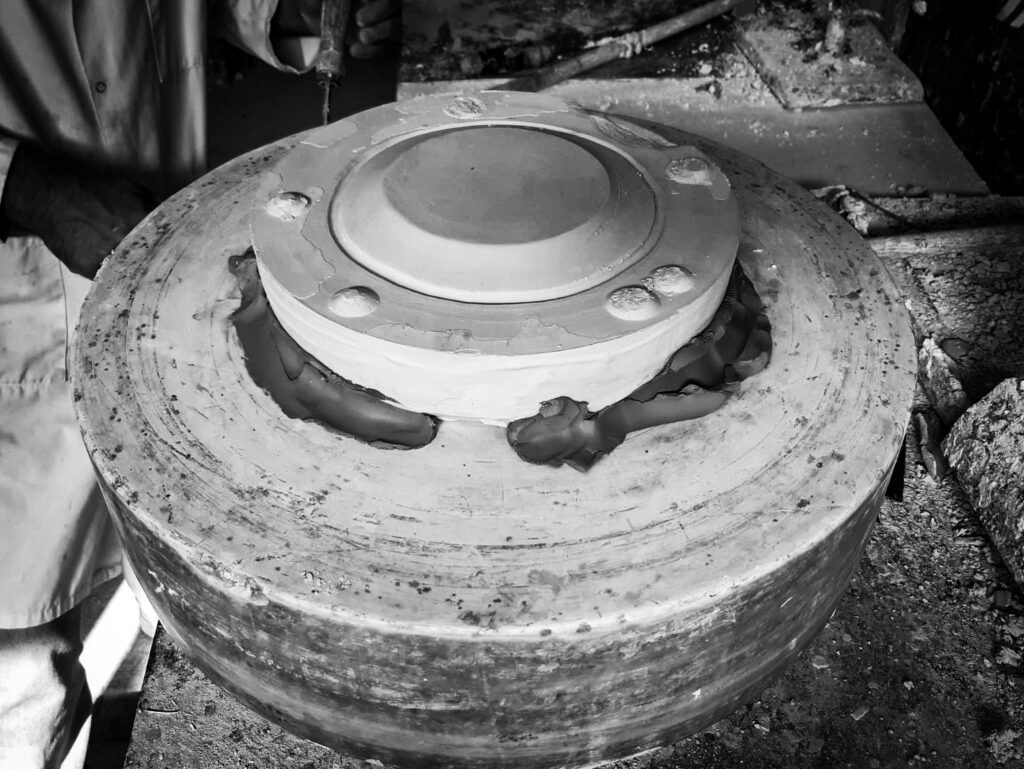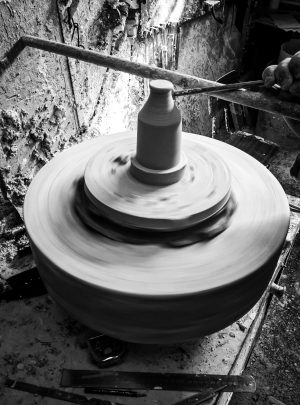After the design of the ceramic piece is finished, the second phase begins – creating the moulds.
The process of modelling allows for the mass production of a ceramic piece, whether it is artisanal or industrially produced. In order to enable the mass production of a certain item, it is necessary to make a prototype – a model – that, in our case is made out of plaster, from which is made, subsequently, the first mould, also in plaster. With this mould it’s possible to create a limited number of samples, and, subsequently, create a “madre” – made out of silicone, – from which it´s possible to create an unlimited number of moulds and ceramic pieces.
creating the model
The process of modelling starts with the creation of a plaster model. We start by defining the wanted measurements of the piece bearing in mind the retraction ratio, which requires an increase of 5 or 8%, in accordance with the chosen method of production (roller, press machine or slip casting), of the measures.
Thereafter, it is necessary to create a plaster solid base, in order to support the piece that we want to craft, accordingly with the size of the piece.

Before we begin the development of the model, we need to create the plaster mix by combining plaster and water, the average ratio is 1200g of plaster for 1 litre of water. Now we are ready to begin the crafting of the plaster model. First, we apply a release agent, industrial soap plus water, in the plaster base to prevent the model from sticking to the base. With the aid of a turning lathe and turning tools we mould the model until it reaches the desired shape and size.

creating the mould
Once the model is done, the creation of the mould follows. According to the piece, these moulds can be single, bipartite, tripartite ou “n” partite. We must study the model and mark the division points. Thereafter we are ready to create the plaster mould and, subsequently, a silicone “madre”.
decorative motifs
The decorative motif’s purpose is to decorate the ceramic piece, creating a distinguished feature. These decorations can be of various styles – naturalistic, geometrical, or others -, and sizes, and of high or low relief. These are also made of plaster and are applied in the interior of the mould.
Keep track of our blog and learn more about the manufacturing processess of your ceramic pieces.
